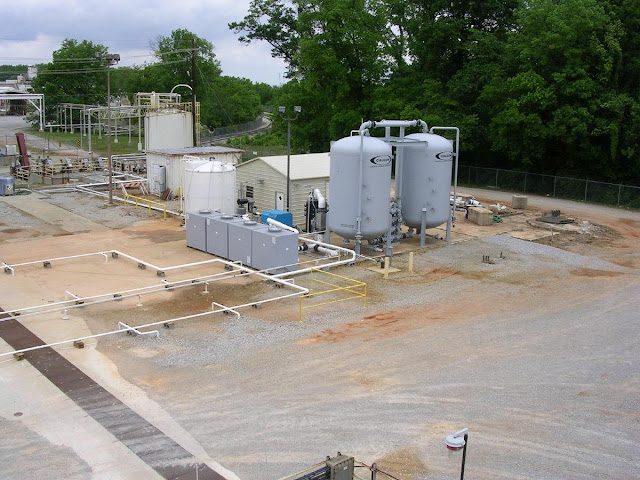Introduction
In June 2015 the Drinking Water Quality Institute (DWQI) issued a recommendation for a Maximum Contaminant Level (MCL) for perfluorononanoic acid in response to a request from the Department of Environmental Protection to recommended MCLs for three long-chain perfluorinated compounds (PFC), also known as poly- and perfluoroalkyl substances (PFAS): perfluorononanoic acid (PFNA), perfluorooctanoic acid (PFOA) and perfluorooctanesulfonic acid (PFOS).
Due to their similar properties (e.g. persistence, water solubility, similar structure, strong carbon-fluorine bonds, and high polarity) the treatment options are not expected to differ for each of these three compounds. Accordingly, the DWQI Treatment Subcommittee reported on treatment options for all three compounds in one document found in Appendix C of the DWQI PFNA Recommendation and entitled “Recommendation on Perfluorinated Compound Treatment Options for Drinking Water.”
This document is intended to update and supplement the June 2015 Treatment Subcommittee report, based on the 2016 publication of the Water Research Foundation (WRF) document entitled, “Treatment Mitigation Strategies for Poly- and Perfluoroalkyl Substances,” (also referred to as WRF Web Report #4322) and in light of draft recommendations for PFOA by the Health Effects and Testing Subcommittees.
The Treatment Subcommittee of the DWQI is responsible for identifying available treatment technologies or methods for removal of hazardous contaminants from drinking water and for identifying whether a recommended MCL can be feasibly and reliably met using available technologies.
1. PFNA Treatment Clarification
It should be clarified that the 2014 WRF report referenced throughout the Treatment Subcommittee report included a table that described the “assumed” removal rates for PFNA with respect to anion exchange and granular activated carbon (GAC) rather than observed removal rates. The referenced case studies for New Jersey American (Logan System Birch Creek) and Amsterdam demonstrated actual removal of PFNA using full-scale GAC installations.
2. Treatment Design
The treatment techniques described in the Treatment Subcommittee document may not be effective for all perfluorinated compounds. As noted in the document, some treatment methods are more effective for long-chain PFCs than for short-chain PFCs. Further information on the removal of various PFASs is included in the 2016 WRF document (Dickenson & Higgins, 2016).
The Treatment Subcommittee recommends that consideration should be given when designing the bench study evaluations if other PFASs are present in the source water, even if they are not currently being regulated.
3. Anion Exchange
In a 2015 WRF publication, Dudley et al. (2015) indicated that anion exchange “demonstrated great promise for PFAS removal, provided that resins are regenerated in a manner that restores, at least periodically, the PFAS removal capacity of the resin.” The same report also suggested consideration of “[a] possible alternative for PFAS removal could be a hybrid adsorption/anion exchange treatment approach, in which more strongly adsorbing PFASs are initially removed by activated carbon and more weakly adsorbing PFASs subsequently by anion exchange (Dudley et al., 2015).”
On Page 9 of the Treatment Subcommittee report, WRF Project #4322 is cited and referred to as an “ongoing” project. It should be noted that this project has been concluded, and the results note that anion exchange, among other treatment methods, “show promising results for the removal of these chemicals (Dickenson & Higgins, 2016).
5. Advanced Oxidation:
The statement on page 9 of the June 2015 Treatment Subcommittee report regarding the ineffectiveness of conventional oxidation is further supported by recent WRF publications, which concludes that these processes “proved mostly ineffective” and “unable to oxidize PFASs because of the strength of the carbon-fluorine bond” (Dickenson & Higgins, 2016 and Dudley et al., 2015).
6. Membrane Filtration:
Membrane filtration, specifically nanofiltration/reverse osmosis, was also evaluated by WRF and found to be effective (Dickenson & Higgins, 2016).
7. Granular Activated Carbon:
In the 2016 WRF publication, GAC is considered to be an effective method of treatment, as two out of three sites that tested for PFAS concentration observed removal, with empty bed contact time ranging from 10-13 minutes (Dickenson & Higgins, 2016). However, consideration must be given to the background matrix of the source water. WRF refers to some instances where PFASs measured at higher concentrations in the effluent than in the influent. According to the WRF publication, “this is believed to be due to competitive effects with other sorbing species (perhaps longer chain PFASs and/or natural organic matter) leading to desorption …” (Dickenson & Higgins, 2016). Additionally, during rapid small-scale column tests, the effluent concentration for PFOS never reached more than 2% of influent concentration (Dickenson & Higgins, 2016).
Conclusion
The Treatment Subcommittee concludes that it has been demonstrated that PFOA can be reliably and feasibly removed by carefully designed GAC treatment to below the recommended health-based MCL of 14 ng/L.
References
Water Research Foundation (2014). Advances in Water Research. 24(2): 19-23
Dickenson, E. R. V. and Higgins, C. Water Research Foundation (2016).
Treatment Mitigation Strategies for Poly- and Perfluoroalkyl Substances (Web Report #4322).
Dudley, L., Arevalo, E.C., and Knappe, D. R. U., Water Research Foundation (2015). Removal of Perfluoroalkyl Substances by PAC Adsorption and Anion Exchange. (Web Report #4344).




